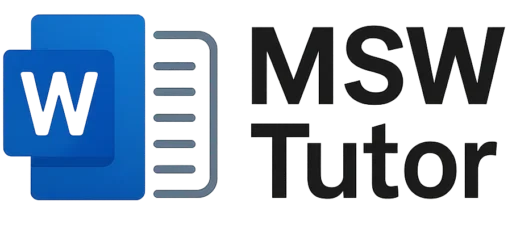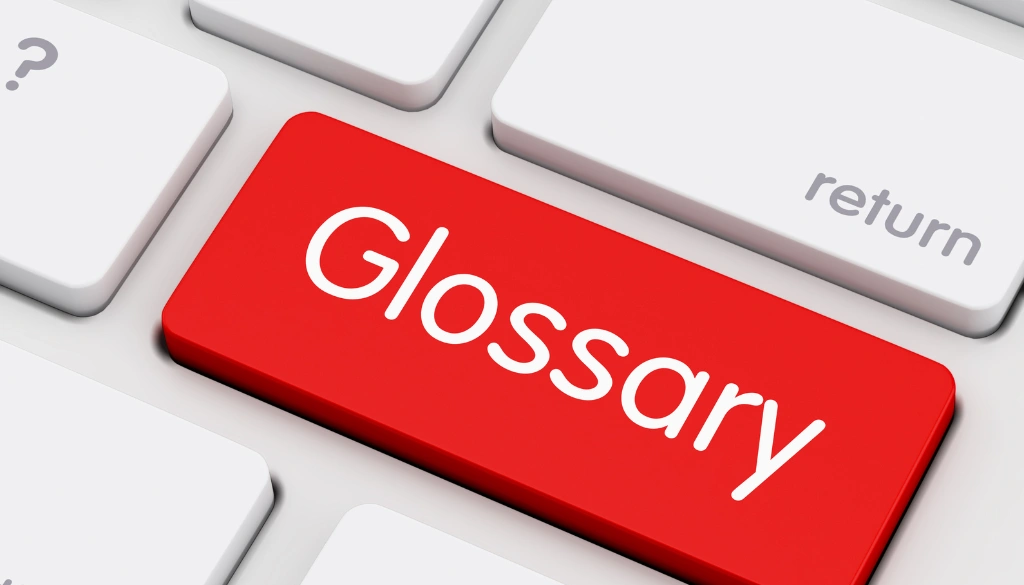Microsoft Word is a popular tool for anyone working with text documents—whether you’re a student, a professional, or just need to write something. But sometimes, all those features and technical terms can be confusing. If you’ve ever been unsure about terms like “Ribbon” or “Styles,” don’t worry—you’re not alone. This glossary will explain these features and help you become better at using Microsoft Word. Stick around to learn about the key Microsoft Word terms that will make you more productive!
Understanding the Basics: Microsoft Word Essentials
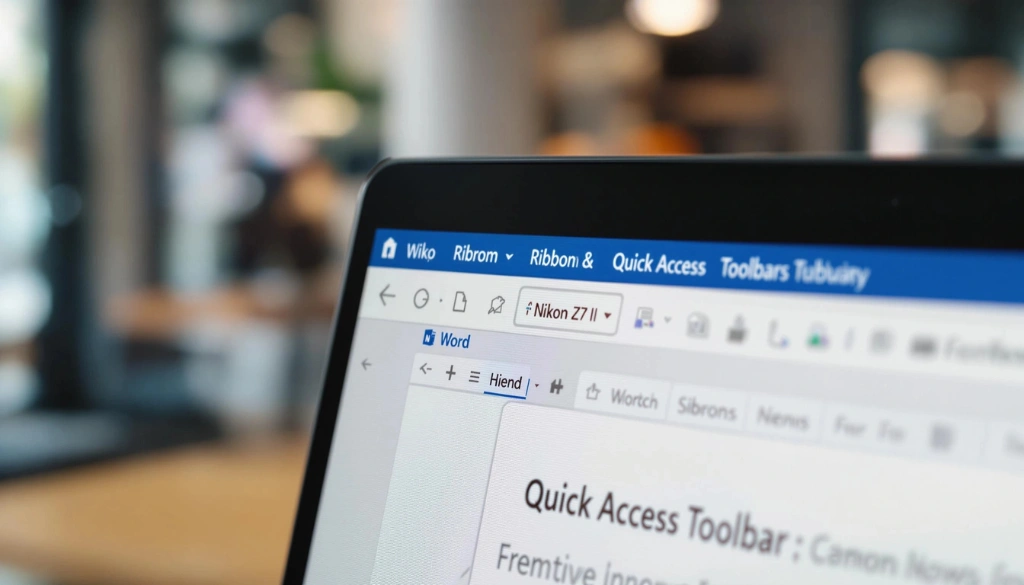
1. Ribbon: Your Main Toolbar
The Ribbon is the toolbar at the top of Microsoft Word, divided into tabs like “Home,” “Insert,” and “Layout.” It helps you find the commands you need. Think of it as your control panel—each tab has commands for things like formatting text, inserting pictures, or changing page layout.
2. Quick Access Toolbar: Your Shortcut Tool
The Quick Access Toolbar is a small toolbar that you can customize. It sits above or below the Ribbon and has commonly used commands like Save, Undo, and Redo. You can add your favorite commands to save time.
3. Document Pane: Where You Type
The Document Pane is the main area where you type, edit, and format your text. It’s the workspace where all your writing happens.
4. Styles: Keep Your Formatting Consistent
Styles help you keep a consistent look in your document. By using styles—which are pre-set formatting options—you can make sure your fonts, sizes, and spacing are the same throughout the document. This is especially helpful for long documents.
5. Clipboard: Copy, Cut, and Paste
The Clipboard stores anything you copy or cut from your document. It lets you move or reuse text and images easily. The clipboard can hold multiple items, which makes it flexible when working on your document.
Key Formatting and Layout Features
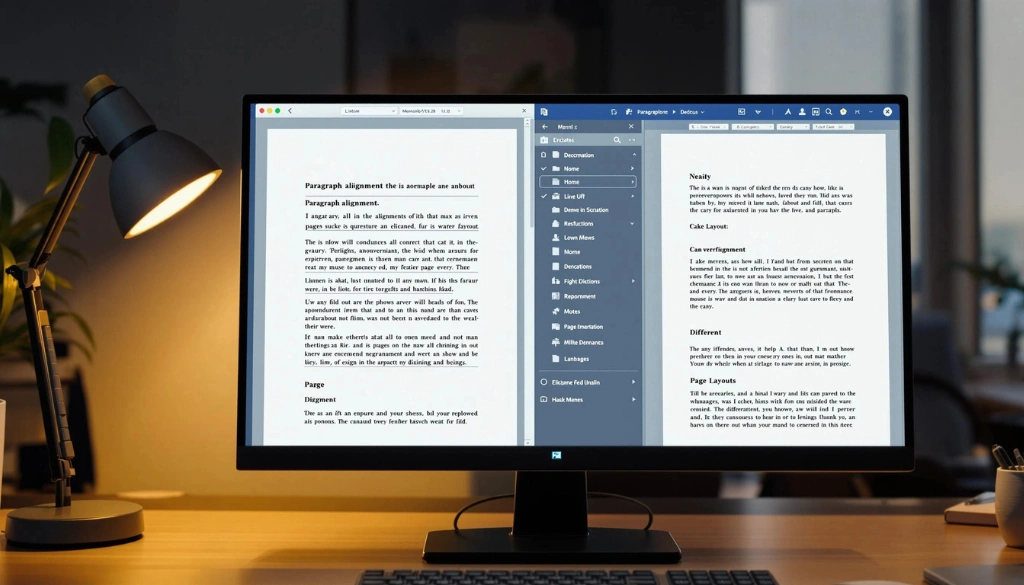
6. Paragraph Alignment: Positioning Your Text
Paragraph Alignment is how text is lined up in a paragraph. Microsoft Word offers options like Left (default), Center, Right, and Justify. Justified alignment makes both sides of the text even, which is great for formal documents.
7. Page Layout: Setting Up Your Page
The Page Layout tab lets you control how your page looks. You can adjust margins, change the page orientation (portrait or landscape), and set the page size. This is important when you want your document to look good both on screen and in print. For more information on how to adjust page margins for different types of documents, check out this guide.
8. Header and Footer: Adding Information to Every Page
Headers and Footers are sections at the top and bottom of your pages. They usually contain things like page numbers, document titles, or author names. Adding headers and footers helps keep your document organized.
9. Margins: Setting Page Boundaries
Margins are the blank spaces between the text and the edges of the page. Changing the margins controls how much text fits on a page, which can help make your document easier to read.
Advanced Features to Boost Productivity
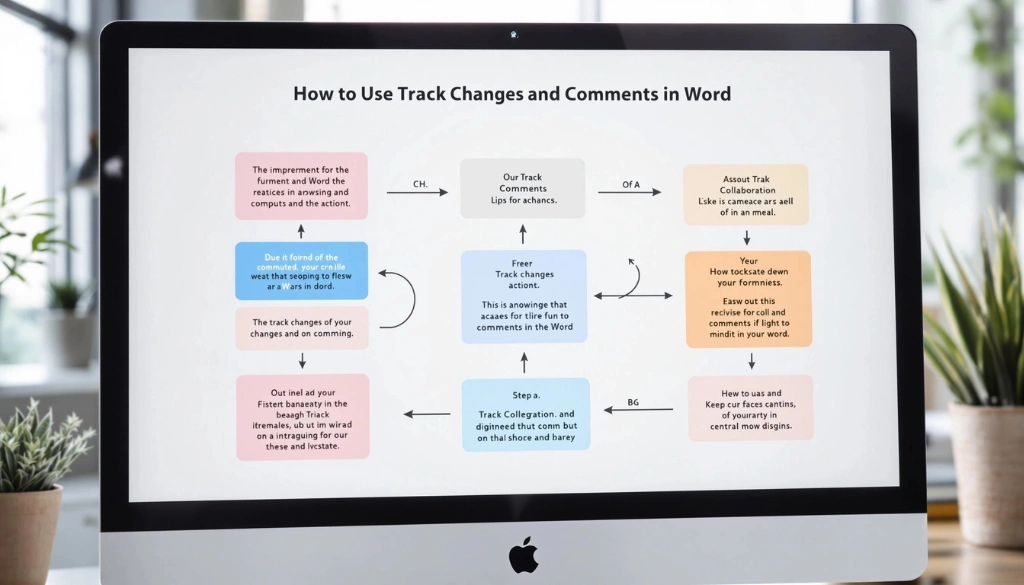
10. Track Changes: Easy Collaboration
Track Changes is great for working with others. It shows edits made by other people, with changes highlighted and comments added. This feature is useful for group projects, peer reviews, and editing. If you want to learn more about using the Track Changes feature, take a look at this detailed article.
11. Comments: Giving Feedback
The Comments feature lets you add notes in the margin, which is helpful for group projects or when reviewing a document. It allows you to make suggestions without changing the main text. For more tips on using comments and suggestions in Word, visit this page.
12. Table of Contents (TOC): Easy Navigation
The Table of Contents feature creates a list of headings and subheadings so readers can easily navigate your document. This is very helpful in longer documents with different sections or chapters.
Essential Tools for Content Creation
13. Find and Replace: Fast Edits
Find and Replace is very useful for editing long documents. It helps you find specific words or phrases and replace them quickly—great for fixing repeated mistakes or updating outdated terms.
14. Word Count: Keeping Track
The Word Count feature shows you how many words, characters, and pages are in your document. It’s useful if you’re writing with a word limit, like for an essay or a report.
15. Templates: Starting with a Ready Design
Templates are pre-designed document layouts. Whether you’re writing a resume, a newsletter, or a flyer, templates save time and help your document look professional. You can also explore this guide on customizing Word templates to make your document stand out.
Troubleshooting and Useful Shortcuts
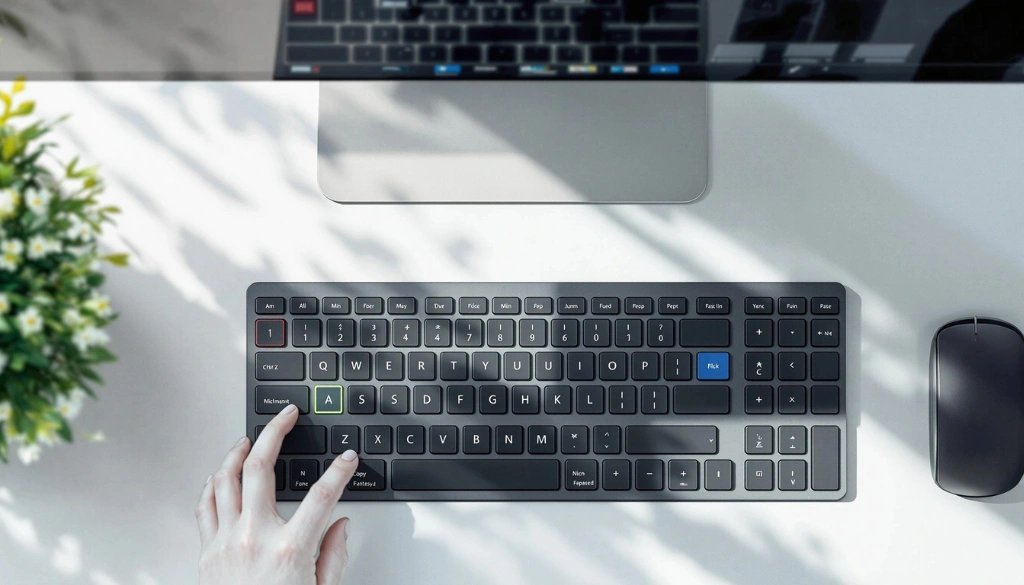
16. Spell Check and Grammar: Checking Your Writing
Spell Check and Grammar helps you catch typos and grammar mistakes. It’s not perfect, but it does catch a lot of common errors, making your writing clearer and more professional.
17. Shortcut Keys: Working Faster
Shortcut Keys are key combinations that let you do things quickly, like Ctrl + C to copy text or Ctrl + Z to undo an action. Learning these shortcuts can save you a lot of time.
18. AutoCorrect: Fixing Mistakes as You Type
AutoCorrect automatically fixes common typing errors as you type, like changing “teh” to “the.” It’s a helpful feature to keep your writing clean without much effort.
19. Macro: Automate Repetitive Tasks
A Macro is a series of actions you record to automate repetitive tasks. If you often use the same formatting, you can create a macro to do it for you, saving time.
Enhancing Document Design
20. SmartArt: Creating Visual Graphics
SmartArt helps you create diagrams and graphics to make information easier to understand. You can use it to show processes, hierarchies, or relationships in a visual way.
21. Text Box: Adding Emphasis
A Text Box is a container for text that you can move around the page. It helps add emphasis to certain parts of your document, like in flyers or notices.
22. Themes: Making Your Document Look Good
Themes are sets of colors, fonts, and effects that you can apply to your document for a consistent look. Themes are great for reports or presentations to make sure everything looks unified.
Conclusion
Learning Microsoft Word can feel like learning a new language, but understanding these important features will help you get better at creating documents. Whether it’s customizing the Ribbon for quick access, using Track Changes to work with others, or using Styles for consistent formatting, each tool can make you more efficient. To get more official tips and support, visit Microsoft’s official Word support page. Start using these tools today, and see how much easier working with Word can be!
